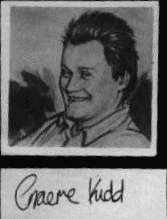

The home computer software industry seems to be following the model that astronomers use for the life cycle of stars.
A mature star consists of a solid nucleus surrounded by burning gases which give off a considerable quantity of energy, including heat and light. A couple of years ago, the home computer industry consisted of a large number of small, independent firms, all highly active and all releasing games left, right and centre. A few larger companies sat in the middle of the industry providing an anchor — this nucleus included the larger software concerns, independent distributors and a couple of retail chains.
The next stage of a star’s life is the Red Giant phase, when the matter surrounding the nucleus begins to run out. About a year ago, the innovative qualities of games for the Spectrum began to dwindle, and apart from a few bursts of imaginative design, the glow of exciting new games subside as licence deals took over. Games designers and programmers started working to a formula, producing clone upon clone. Many of the small companies disappeared, and the nucleus grew more solid.
Then comes the Supernova stage, when most of the matter that surrounds the nucleus of a star is ejected (spot the bankruptcies). After the Supernova comes the White Dwarf, when the matter making up the star collapses in onto the nucleus — which in turn becomes more more dense as it absorbs material and condenses.
This is the stage the British games industry has now reached — a handful of large concerns have all but absorbed the smaller companies. The latest news sees Mastertronic absorb Melbourne House and Mirrorsoft take PSS into the corporate fold. And of course Mikro-Gen took cover in the CSD group some months ago.
How many independent companies remain active in the market now that the major concerns are acting like Black Holes, attracting talent and the competition into their depths? They can be counted on the fingers of one hand — ignore the thumb. Only a couple of companies remain truly independent, sourcing and publishing their own products.

The only hope for originality and innovation lies in the emergence of a system that parallels the book publishing industry, where authors tout their wares around the large publishers. Some companies like Canvas, Denton Designs, Binary Design and Design Design are already ‘packaging’ products for the larger concerns, and a thriving market for freelance programmers exists.
The only drawback is that the large marketing-oriented combines can exert an undue influence on the market — given their powerful relationship with the distributors and retail chains. With less choice available, the customer may have to put up with the games that marketing people decide will sell. The recent spate of licensed games and tie-ins, nearly all of them mediocre, could be an indication of things to come. Is innovation squashed out of the equation when corporations control the home computer software industry? Let’s hope that imagination isn’t sucked into the resulting Black Hole.
Following on from the ratings changes announced last month, we’ve decided to complete the task of revamping the way in which our (named) reviewers evaluate games.
The general reaction to the changes we’ve already made is favourable — quite a few people have written to Lloyd telling him that it was the Right Thing To Do. Over the past year or so, the general standard of games has improved steadily which has led to a degree of polarisation in the percentages that our reviewers have been awarding. So as of this month, we’ve reappraised the way in which percentages are awarded, and taken the opportunity to remind ourselves that an average game should score around 50%.
Games can only really be judged in the light of the current standard of release — for instance, had Starglider 128 been released eighteen months ago it would have been difficult for any percentage system to cope. (And for any Spectrum to cope, but you get the drift of the argument.) A more even spread of percentage ratings should be the outcome of rejuvenating our percentage policy, and fewer games should be bunched together at either end of the scale.
One final upgrade is planned — and with luck we should have implemented it in time for next month. While some software hoses make it clear that an enhanced version of a game is included on the cassette for the benefit of 128K and Plus 2 owners, quite a few games offer additional facilities, or ‘work’ better on the Plus 2 than they do on the basic Spectrum — the sound on Mastertronic’s 180 for instance.
So as of next month, Ben Stone will be providing a small panel to go with every mainstream game review, pointing out any additional features that 128K and Plus 2 owners are likely to find when they load up.